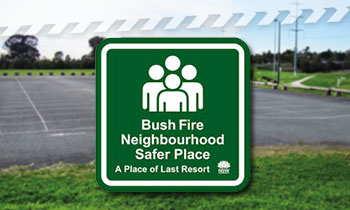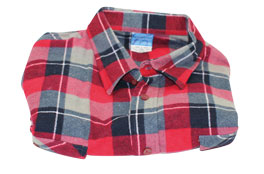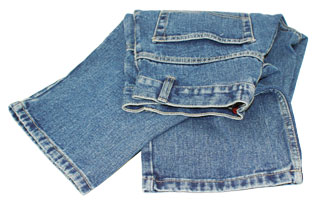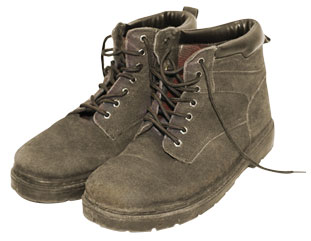 from ABC Kids for Parents 2019
from ABC Kids for Parents 2019
Preparation isn't just about cleaning up around the house and having a bushfire survival plan.
It's also about making sure you consider your physical, mental and emotional preparedness.
A bush fire can be a terrifying situation. Strong gusty winds, intense heat and flames will make you tired quickly. Thick heavy smoke will sting your eyes and choke your lungs. It will be difficult to see and breathe.
The roaring sound of the fire approaching could be frightening. Embers will rain down, causing spots fires all around you. Power and water may be cut off. You may be isolated, and it will be dark, noisy and extremely demanding both mentally and physically.
If you have any doubts about your ability to cope, you should plan to leave early, well before a fire reaches your area and well before you are under threat.
People who are at higher risk, such as children, elderly, disabled or with medical problems, should always leave early.
Leaving early is always your safest option.
To help your family prepare for a bush fire, you need to make a bush fire survival plan. This will help you make important decisions like when to leave, what to take, and what to do with animals.
Stay informed about bushfires in your area.
The Bushfire CRC has produced an e-book for parents on how to talk to children about bushfire preparation and safety. The book is based on the PhD research of Briony Towers from RMIT University, which has been presented in many research and industry forums in recent years. The book is designed as an interactive PDF which can be read on a computer or any tablet device. It can also be printed.

Neighbourhood Safer Places
 Neighbourhood Safer Places are a place of last resort during a bush fire emergency.
Neighbourhood Safer Places are a place of last resort during a bush fire emergency.
They are to be used when all other options in your bush fire survival plan can't be put into action safely.
You should be aware of any Neighbourhood Safer Places in your area, and note them in your bush fire survival plan before a bush fire occurs. You should also know how to get there, as well as alternate routes in case the road is blocked or too dangerous to drive on.
Not all areas will have a Neighbourhood Safer Place. If there is no Neighbourhood Safer Place in your area, you should identify other safer locations you can go to as a last resort. This might include a nearby home which is well prepared, a shopping centre or oval which is well away from the bush.
A Neighbourhood Safer Place is designed as a Place of Last Resort in bush fire emergencies only. Please note that travelling to or sheltering at a Neighbourhood Safer Place does not guarantee your safety.
Use the interactive map to locate your local Neighbourhood Safer Places: https://www.rfs.nsw.gov.au/plan-and-prepare/neighbourhood-safer-places
Remember:
- Your safest option will always be to leave early.
- People with special needs, such as the elderly and people with a disability, should always leave before the threat of bush fire.
- If it is unsafe to leave the area or stay and defend your property, and the path is clear, you should move to your pre-identified Neighbourhood Safer Place, or other safer location, prior to the impact of a bush fire.
- Be aware that when you are travelling to your Neighbourhood Safer Place there may be heavy smoke and poor visibility.
- It is important that you are familiar with the area. Gather at the Neighbourhood Safer Place location and remain there until the bush fire threat has passed.
- The conditions at the Neighbourhood Safer Place may be uncomfortable and you may be affected by heat, smoke and embers.
- Water, toilets and food may not be available at the Neighbourhood Safer Place and emergency service personnel may not be present.
- Neighbourhood Safer Places are not intended for pets and livestock.
 Blue Mountains City Council Emergency & Recovery Information 2019-20 at https://www.bmcc.nsw.gov.au provides information on preparing for emergencies, what to do if faced with an emergency and assistance after a bush fire.
Blue Mountains City Council Emergency & Recovery Information 2019-20 at https://www.bmcc.nsw.gov.au provides information on preparing for emergencies, what to do if faced with an emergency and assistance after a bush fire.

 A wide brimmed hat or hard hat. A hat can stop embers from dropping onto your head or down the back of your shirt.
A wide brimmed hat or hard hat. A hat can stop embers from dropping onto your head or down the back of your shirt. Glasses or goggles. Eye coverings can protect your eyes against any smoke, embers and debris that may be in the air.
Glasses or goggles. Eye coverings can protect your eyes against any smoke, embers and debris that may be in the air. Gloves. Gloves can protect your hands from radiant heat, embers and debris that may be in the air or on anything you pick up around your yard when protecting your property.
Gloves. Gloves can protect your hands from radiant heat, embers and debris that may be in the air or on anything you pick up around your yard when protecting your property. A mask or cloth (non-synthetic). Covering your nose and mouth, may protect you from inhaling smoke, ash and embers.
A mask or cloth (non-synthetic). Covering your nose and mouth, may protect you from inhaling smoke, ash and embers. A long-sleeved shirt made from thick cotton or wool is ideal (eg cotton drill work shirt). A shirt can stop embers from burning your skin and help protect you from radiant heat and debris.
A long-sleeved shirt made from thick cotton or wool is ideal (eg cotton drill work shirt). A shirt can stop embers from burning your skin and help protect you from radiant heat and debris. A pair of heavy cotton pants, such as denim jeans, oil free drill pants or cotton overalls. Long pants can stop embers from burning your skin and help protect you from radiant heat and debris.
A pair of heavy cotton pants, such as denim jeans, oil free drill pants or cotton overalls. Long pants can stop embers from burning your skin and help protect you from radiant heat and debris. Sturdy leather work boots or shoes along with a pair of woollen or cotton socks. Sturdy leather footwear can stop embers from burning your skin, help protect you from radiant heat and debris.
Sturdy leather work boots or shoes along with a pair of woollen or cotton socks. Sturdy leather footwear can stop embers from burning your skin, help protect you from radiant heat and debris.


 Neighbourhood Safer Places are a place of last resort during a bush fire emergency.
Neighbourhood Safer Places are a place of last resort during a bush fire emergency.